I guess I’m getting old. I don’t say this because my fortieth birthday is approaching like a speeding bullet, but this: I know that cocktail carbonation is the hot new thing right now, but if someone hands me another carbonated Manhattan I’m going to cry into it, I swear.
Believe me, I’m all for innovation in this little business of ours. I mean, crap, I’ve made quite a name for myself capitalizing on it. But just as I don’t think we need to run around barrel-aging every god damn liquid out there, I fail to see the longevity of a glass of carbonated Barolo, and I’ll be damned if I want my Sazerac full of bubbles.
That said, there’s nothing like a little fizz on the tongue. I’ve always been enamoured with the sorts of long drinks you find in European cafes: the Americano, the Aperol Spritz, and the Bicyclette. These afternoon refreshers share a common structure of a low-alcohol bitter base, a measure of fortified wine, some citrus oil, and a sparkling component for length. They’re light, palate cleansers, appetite awakeners, and thirst quenchers. God damn they’re delicious.
What if… okay, what if we could take a café cocktail, which traditionally relies on just a splash of sparkling water or wine for its fizz, and carbonate the whole thing: base spirit, modifier, lengthener, garnish and all? And what if we could keep it bottled and perfectly chilled to control dilution by omitting the ice? Now that, my friends, might be a reasonable use of a carbonator.

Born from the Jerry Thomas era and inspired by a brown-bagged Pisco and fruit juice variation I tried at Aviary in Chicago last month, the bottled sparkling café cocktails we’re currently serving at Clyde Common are tailor-made for our particular beverage program. There are benefits from a service standpoint to the pre-bottled cocktail, of course, but we also have some very specific reasons why these café coolers work well in this carbonated format.
- They are, essentially, spirit-driven, so there is no need to worry about spoilage.
- The entire drink is carbonated, providing a more complete experience than simply adding a sparkling finish as one would do when building these drinks à la minute.
- And the whole bottle is pre-chilled, eliminating the need for ice and maintaining perfect dilution from beginning to end.
Anyway, there’s the reasoning behind it, let’s begin:
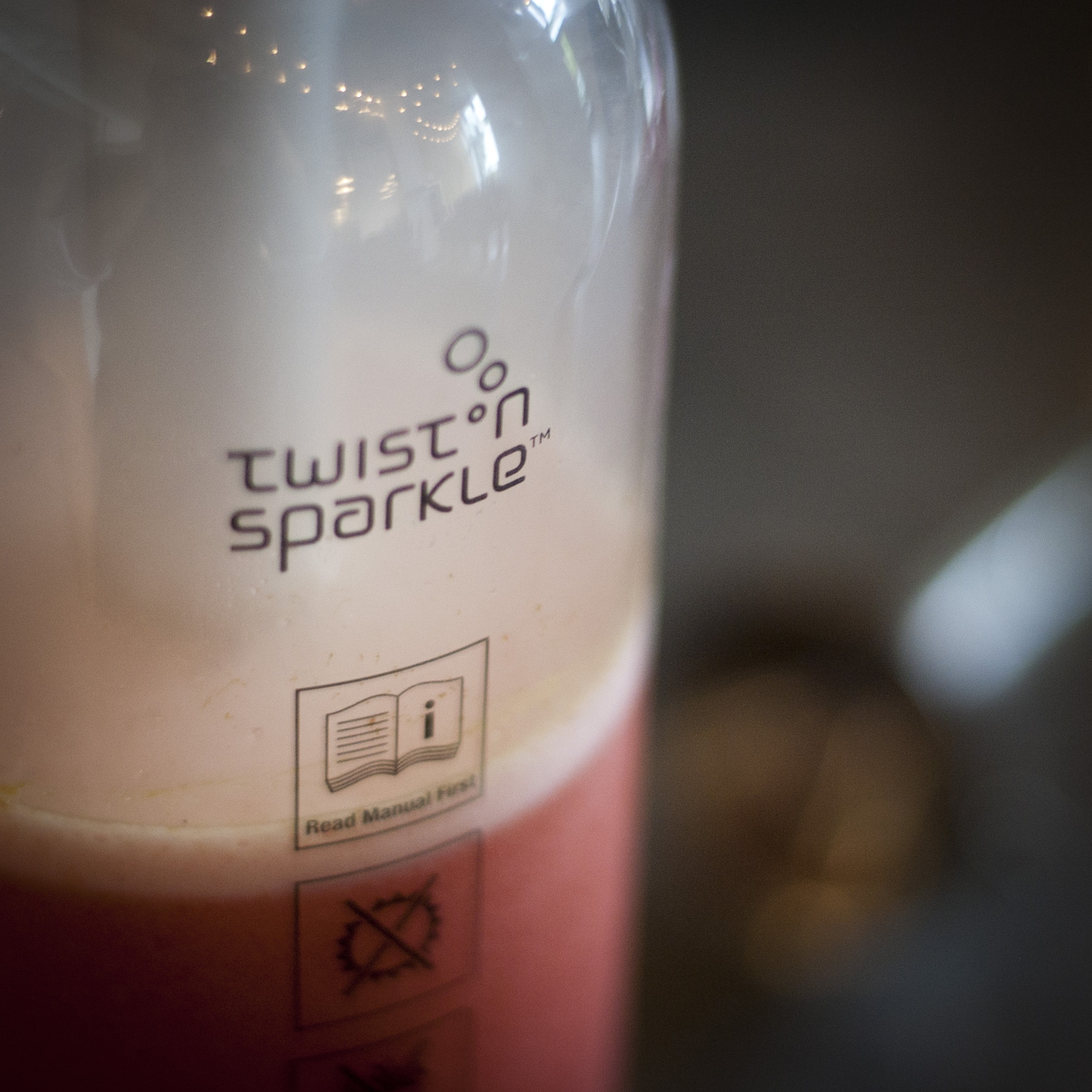
You’re going to need some equipment to get started here, the primary piece of equipment being a carbonator. At at home and in my bar, I use a very inexpensive carbonator called the Drinkmate (it’s like $95 on Amazon). Next you’re going to need some empty bottles (we use clear 187 ml Champagne bottles at my bar, check your local homebrew shop for other options, just make sure they’re crown-cappable), a bottle capper, and some bottle caps.
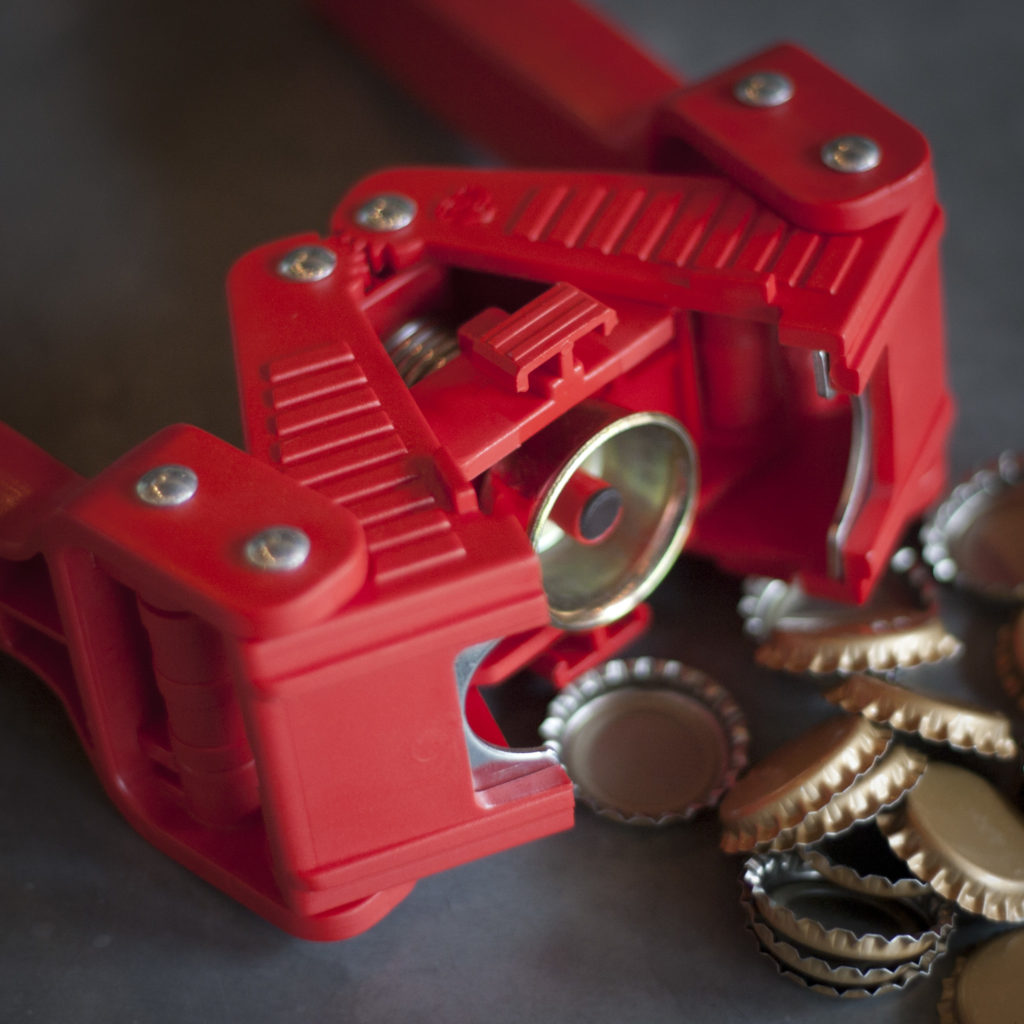
The Drinkmate will carbonate three cups of cocktail at a time, so use this basic formula (below) for three cups of Americano.
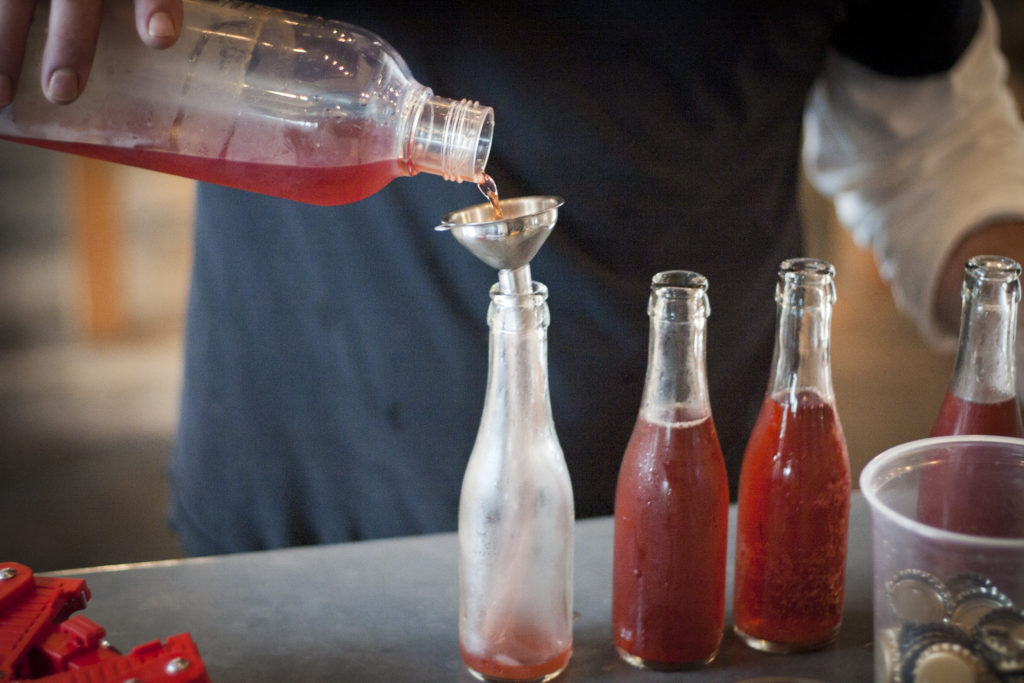
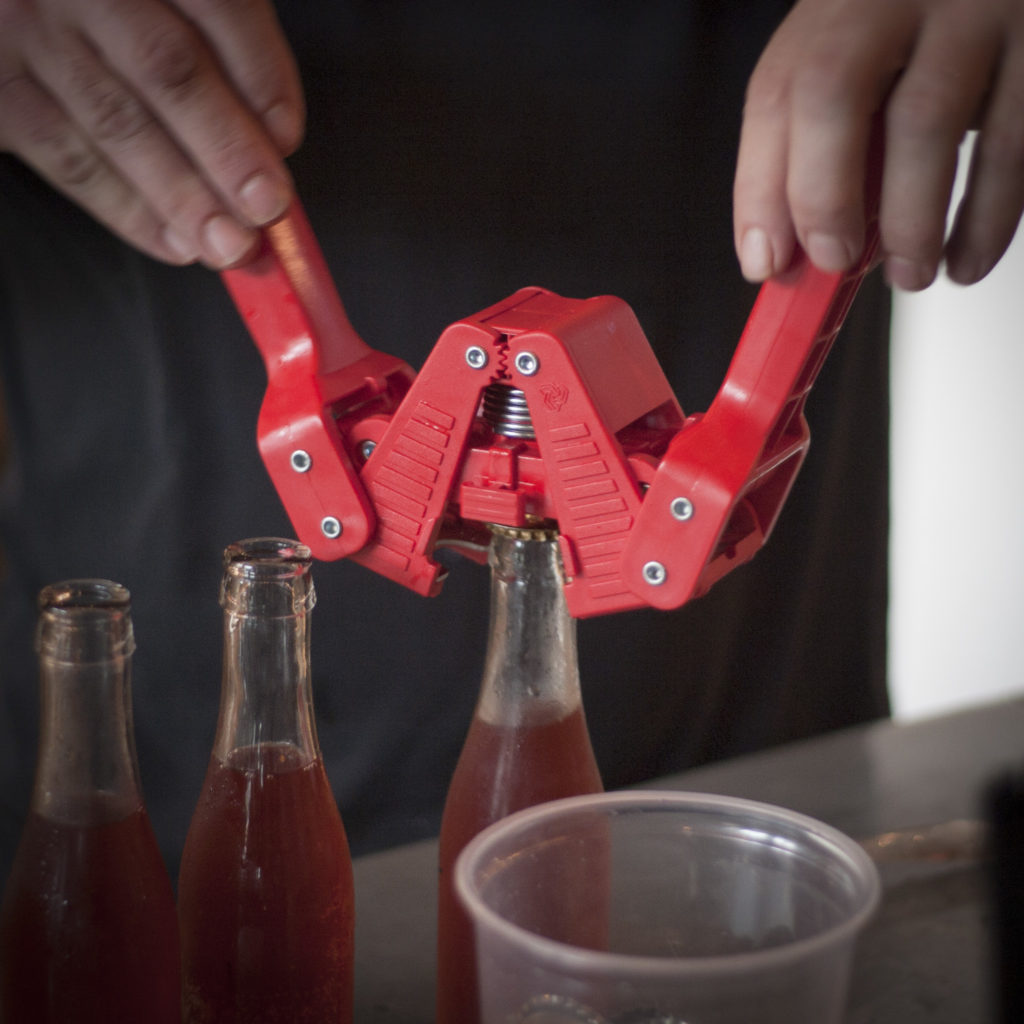
We serve these drinks to our guests in the bottle, with no glass or ice alongside. I think a fun part of the experience is sipping them directly from the bottle, enjoying the maximum amount of fizz as the drink hits your tongue and releases its bubbles. It’s playful, it’s whimsical, sessionable, drinkable, and fun. And, as you can see from the video below by our friends at Small Screen Network, it’s easy.
Update: The iSi Twist ‘n Sparkle, which I originally used for this post, was discontinued shortly after I posted this. I’ve updated this post with a new recommendation, the Drinkmate. It’s something of a hybrid of the Twist ‘n Sparkle and the Sodastream.
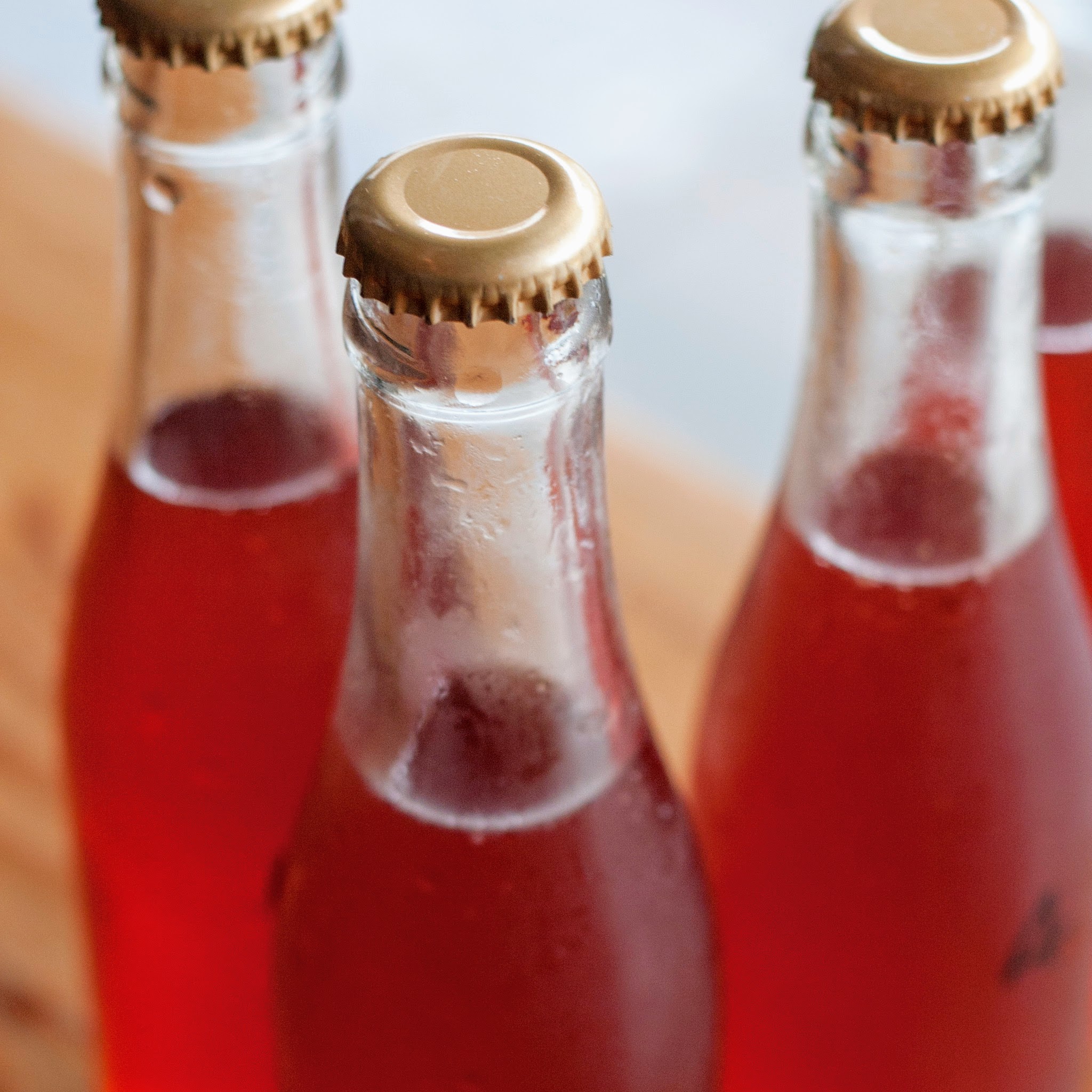
Bottled Carbonated Americano Print Me
- 6 oz sweet vermouth (something drier than Carpano; think Cinzano, Dolin Rouge or Martini and Rossi here)
- 4.5 oz Campari
- 13.5 oz water
- 1 orange, peeled with a vegetable peeler, zests squeezed into the mixture to express the oils
- Carbon dioxide is much more soluble in cold liquid than warm, so you’ll need to get this mixture cold. I typically make a batch a day ahead of time, and then store it in the fridge. Your call.
- Fill the carbonator and carbonate according to the manufacturer’s instructions. Once it’s done doing its business, you’re going to need to fill some bottles, and rather quickly before the carbonation dissipates.
- I have a small funnel attached to a piece of plastic tubing that has been trimmed to fit my bottles’ height exactly. This is going to allow us to fill the bottles from the bottom, and avoid a big, bubbly, heady mess (those bubbles mean carbon dioxide is escaping your solution). Slowly fill each bottle and cap using your handy bottle capper.
Recipe printed courtesy of jeffreymorgenthaler.com
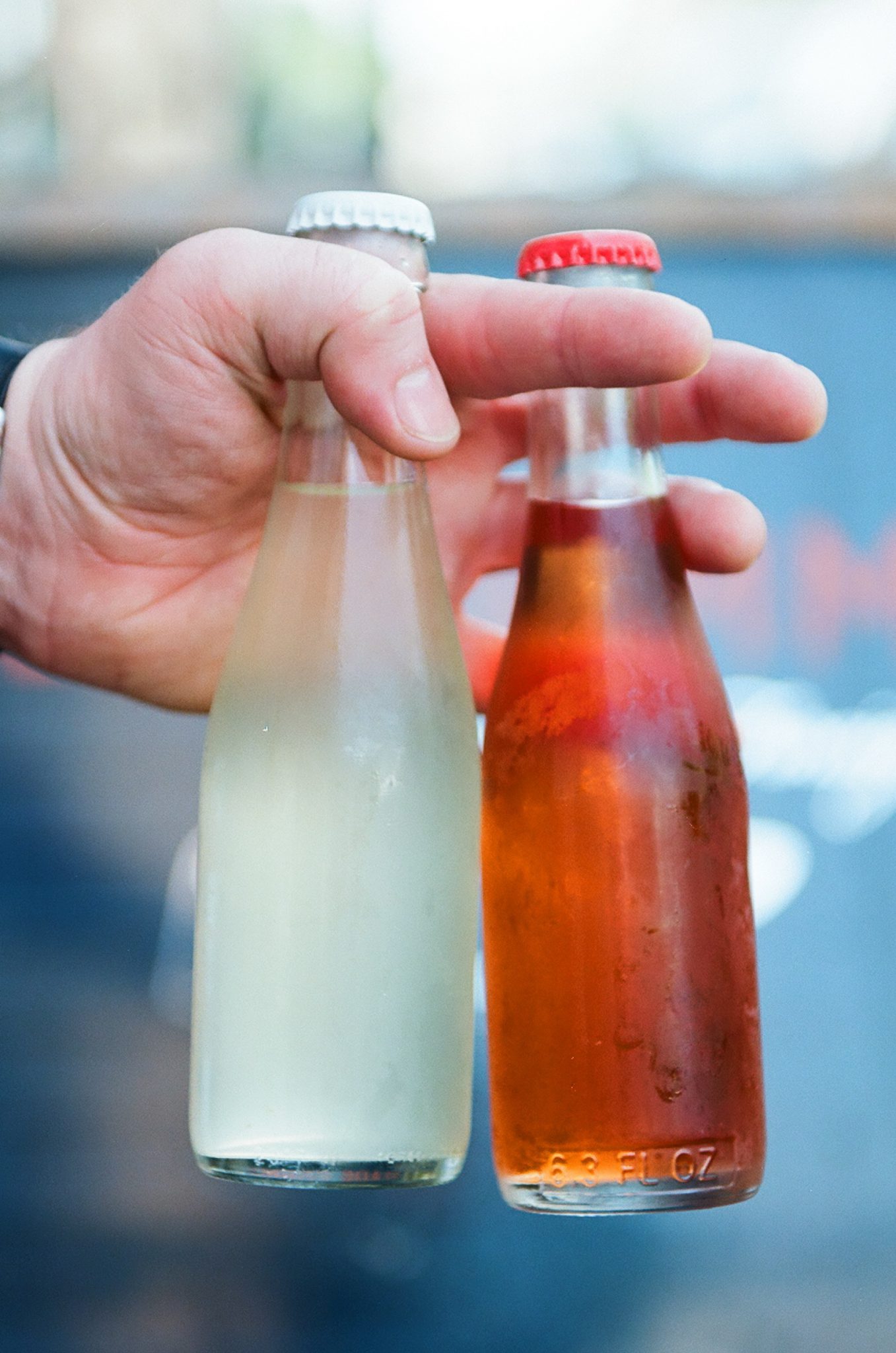
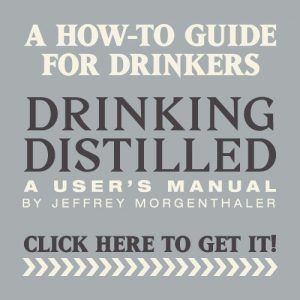
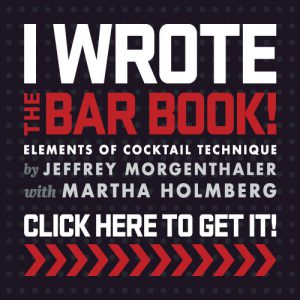
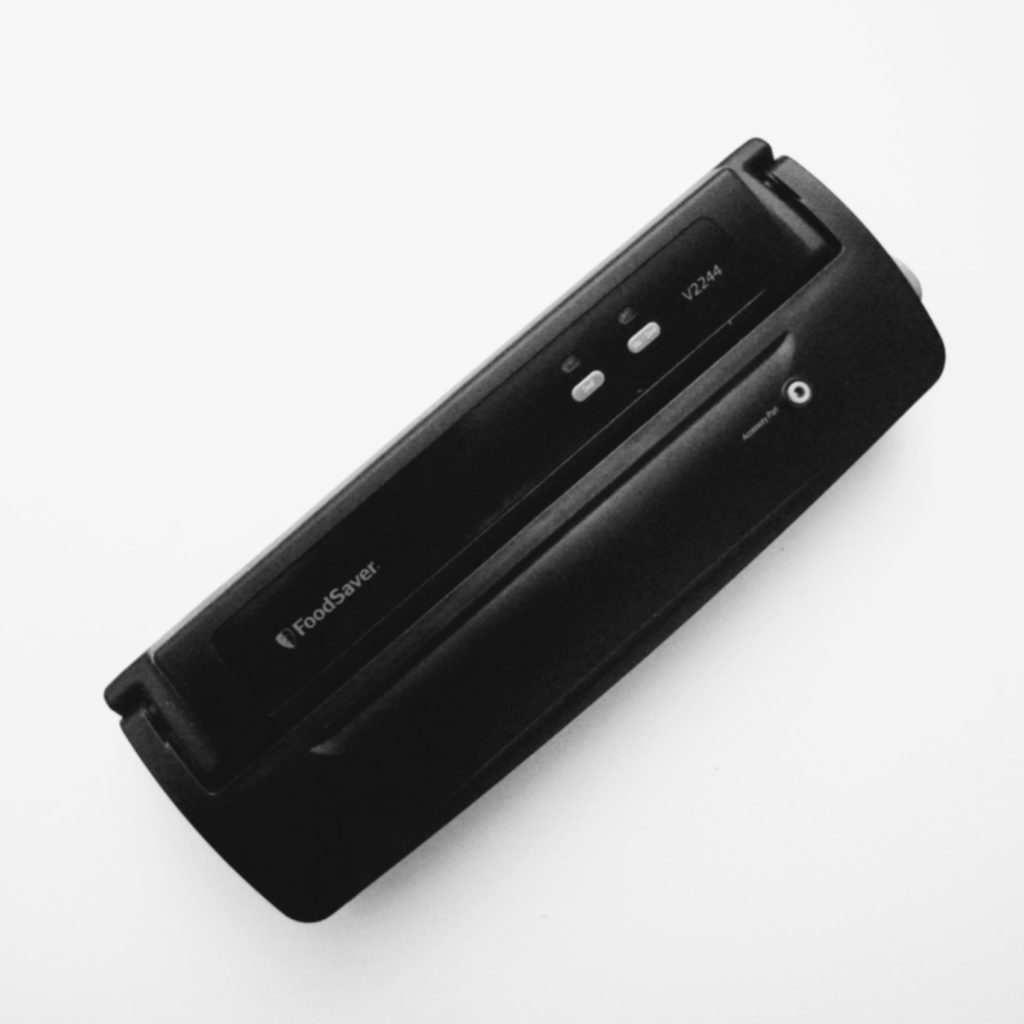
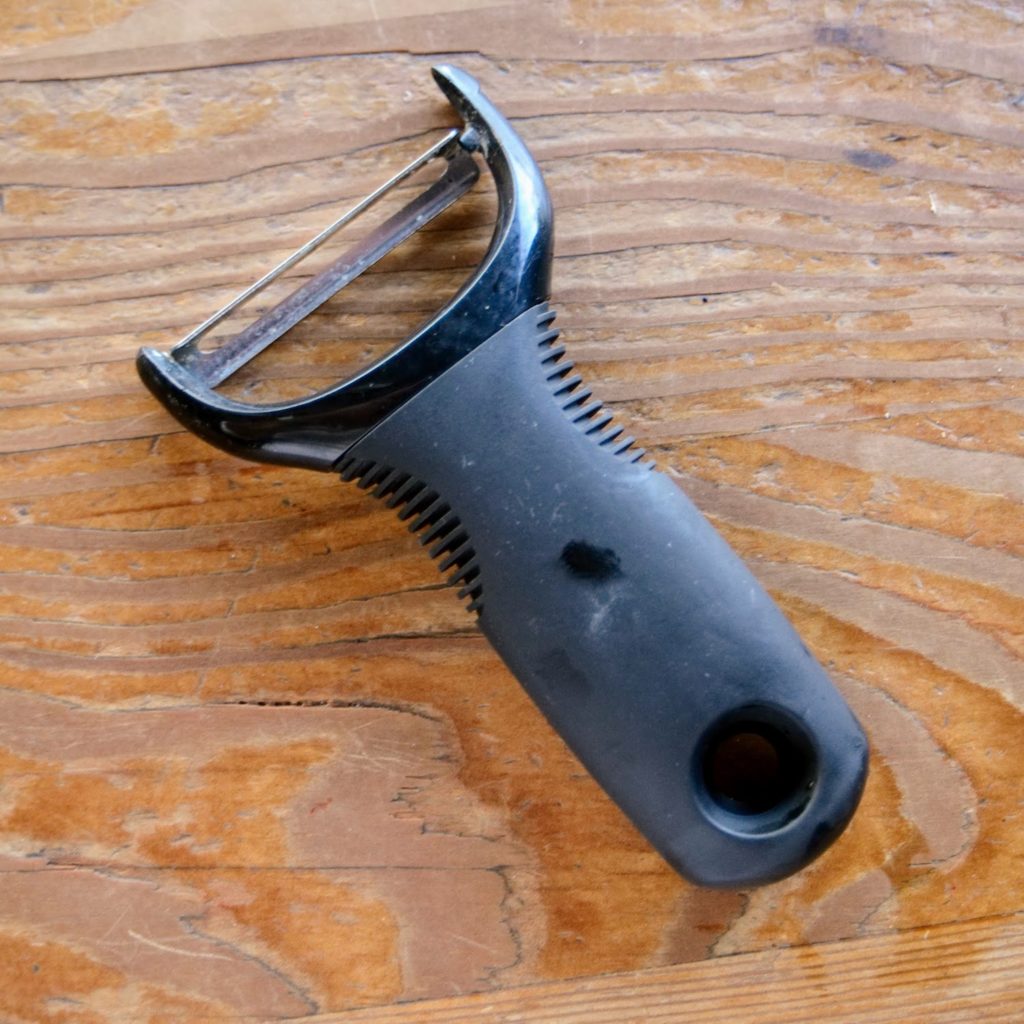
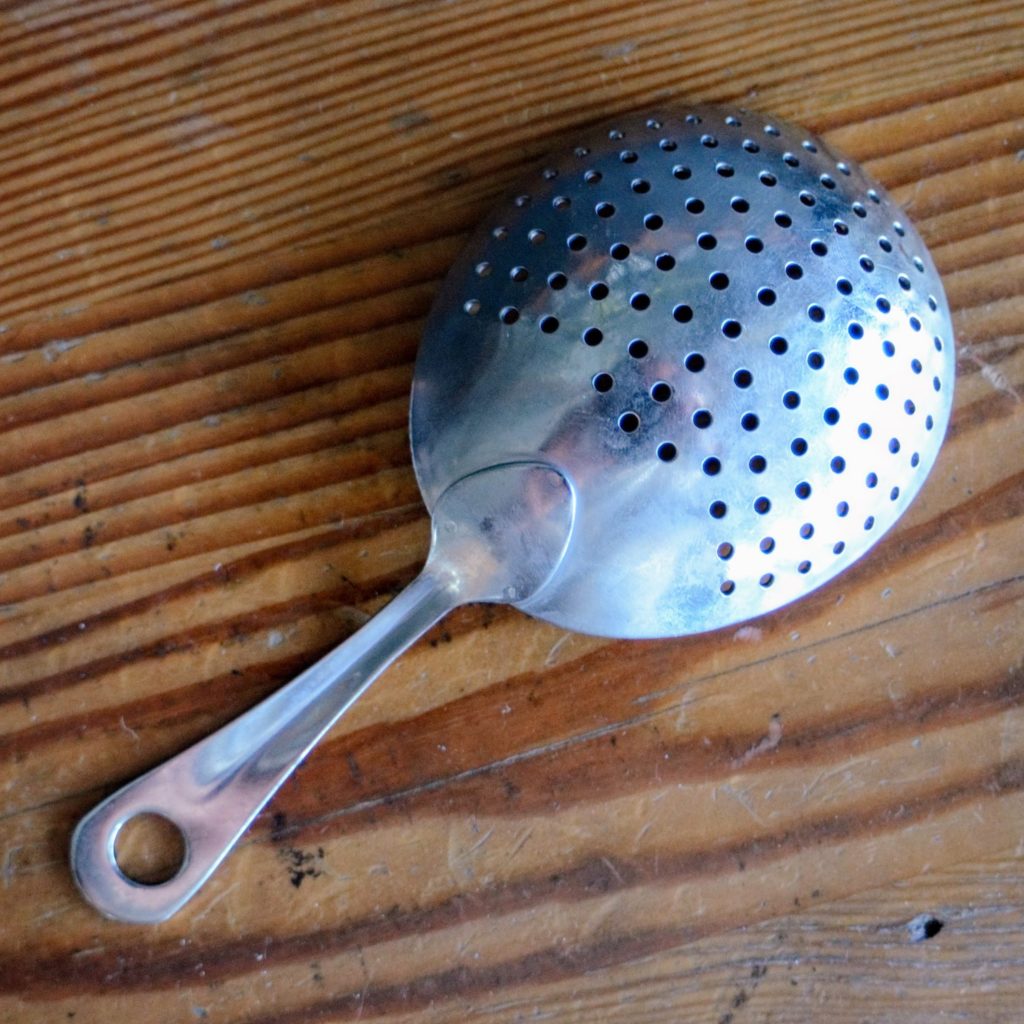
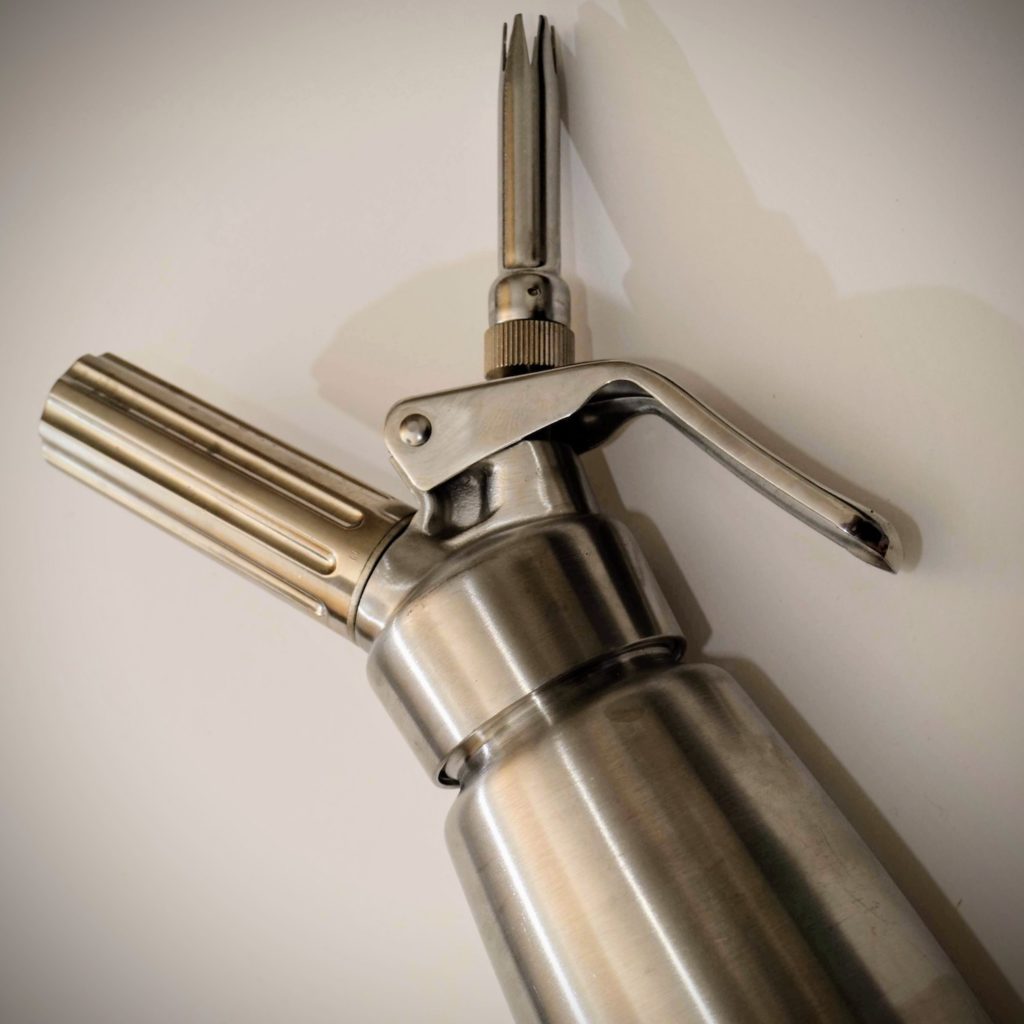
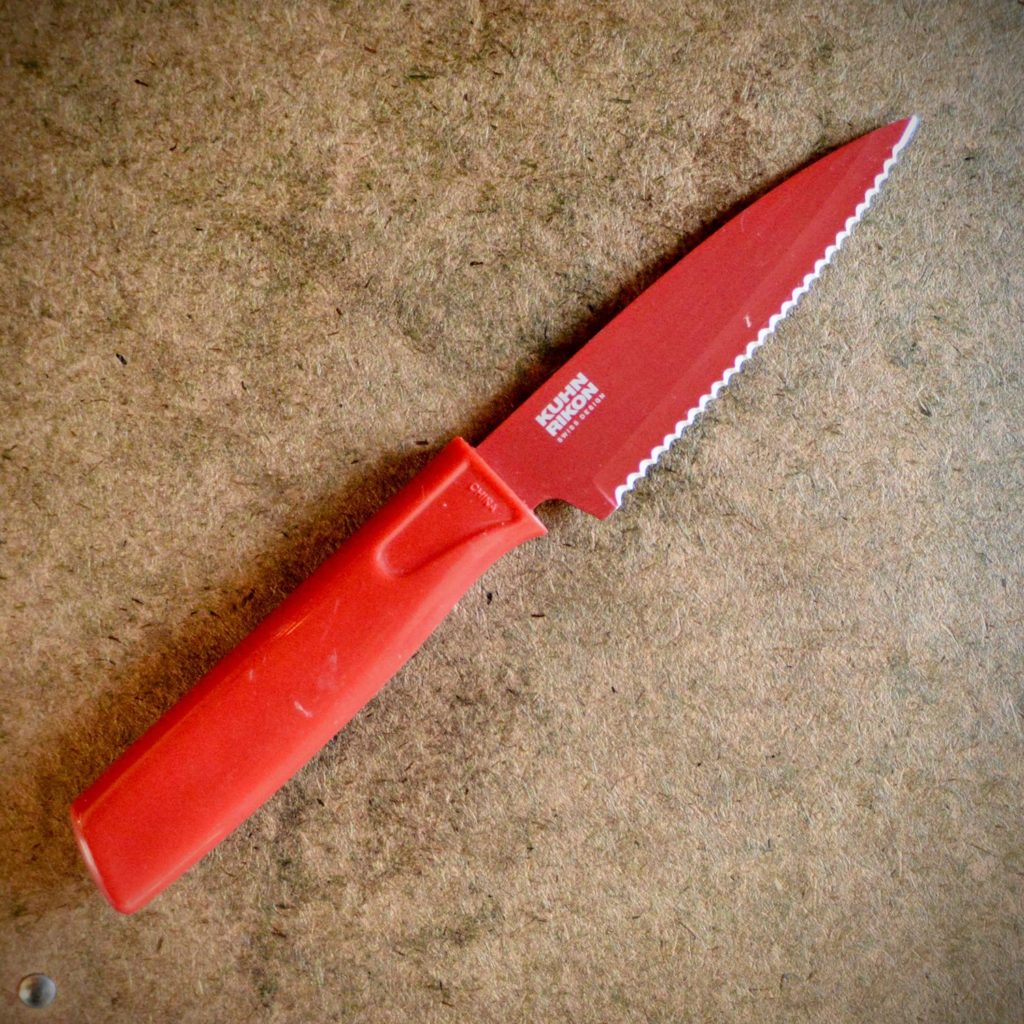
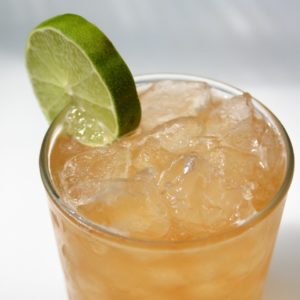
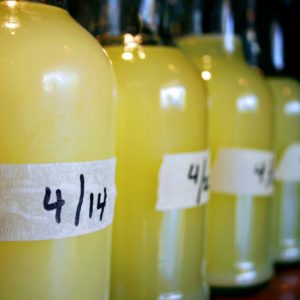
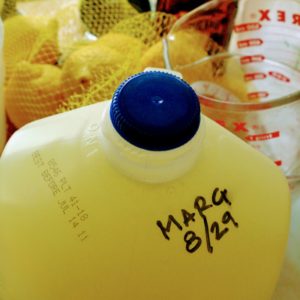

Releasing the gas slowly, is what i meant
I don’t have an appropriate funnel, and neither did my homebrew store, so we collaborated on a clever alternative. Since I’m using a carbonator cap, I got an additional ball valve. Attach the tubing, hook it up to the carbonator cap (releasing the case from the tube slowly with your thumb), put the tube in the bottle, and tip the 2-liter upside down…carbonated cocktail goes directly from bottle to bottle with minimum exposure to the air!
Unfortunately, the drinks came out super bitter. I’m guessing that’s because I put the whole orange zest in overnight instead of just the oils…oops. I’ll give it another shot.
Any other carbonated bottled cocktail recipes?
Thank you for specifying Jeffrey!
Your articles have been very helpful!
Cheers
Hi Jeffrey,
What is bullshit?
John – The idea that using pre-carbonated ingredients rather than carbonating flat ingredients will somehow result in better carbonation is just false.
I was wondering in the Aperol Spritz choice, would you carbonate the whole mixture with Prosecco, or would you use dry white wine instead?
“Same” thing applies to cocktail that requires club soda.
Would you use sparkling water as pre-carbonated ingredient in the canister , or you would use simply flat filtered water?
I’ve kegged ( cornelius kegs ) Aperol Spritz with dry white wine, Aperol , and water for dilution until today, then carbonate with CO2 tank;
Recently tho, I read in a couple of articles around the web stating that carbonating cocktails that require bubbles with already pre-carbonate ingredients ( Prosecco instead of white wine, or sparkling soda instead of flat ) might facilitate the whole process in keeping and achieving maximum carbonation in the final product.
Thoughts?
Yeah, that’s bullshit and anyone who says otherwise doesn’t know what they’re talking about.
Just a quick comment on using fruit juices in bottled cocktails. You want to make sure that they are clarified juices or clarify them yourself. Any particulates within the liquid create “nucleotide sites” (places that form bubbles more easily). This will cause your beverage to decarbonate far faster than a purer liquid.
Matt – As long as you do not exceed the manufacturers stated working pressure for the bottle, you should be OK.
Cheers,
Mike
[email protected]
If you build a home carbonator, would you be comfortable carbonating directly in a glass bottle?
Are there any reason not to?
Cheers,
Matt
How long after bottled will the carbonation last? I’m trying to think on a large scale for where I work if it would be possible. Also have you played around with some ingredients that have already been carbonated like a cocktail with champagne in it?
I used the CO2 set-up as directed for Americano and white sangria, got a wonderfully fizzy batch (maybe too fizzy? Lots of rootbeer-like foam) bottled and capped them, opened them 3 days later, and the fizz was all but gone. Anyone have an idea what might have happened in this process? We’ve been using the Soda Stream to make club soda for syrups, etc., and it also seems to carbonate water much better than we’ve done with the CO2.
Jill – You might be using the wrong size bottle caps. Check to make sure that you’re using American caps on American bottles, or European caps on European bottles. The difference is very subtle, but I’ve picked up the wrong size caps before and had the same problem.
Love the idea of carbonating cocktails
Perlini CopyCat Hack
I want to try carbonated cocktails and spending $100-$200 on a Perlini is a bit too spendy, since I already have a home carbonator setup.
http://www.ourfoodshed.com/blog/2012/1/27/302-Bubbles-To-Booze-A-Look-At-Carbonated-Cocktails
…Other recipes available if you google: Perlini carbonation recipes , or carbonated cocktails
The Perlini is made of Lexan-plastic and opens to reveal a wide-opening to add ice
That got me thinking about using a BPA-Free Lexan-plastic wide mouth Nalgene Bottle
I google around a bit and found that others had used Nalgenes as “pressure vessels” either with dry ice (for fruit) or compressed air
Compressed Air + Nalgene
http://forums.watchuseek.com/f71/poor-mans-pressure-test-chamber-does-sound-feasable-273326.html
Dry Ice and Fruit + Nalgene
http://www.instructables.com/id/How-to-Make-Carbonated-Fruit/?ALLSTEPS
PVC pipe as a CO2 pressure vessel + how to make your own home carbonator…
http://www.instructables.com/id/How-to-carbonate-nearly-anything-make-your-own-ca/?ALLSTEPS
I am going to make my own Perlini-style drink shaker with a 1-1.5L Nalgene bottle and one of the stainless valve stems sold on ebay see: “Tubeless stainless Tire Valve Stem straight”
Similar to the previously mentioned Compressed Air + Nalgene and I will likely put the valve in the cap so I have an easy to work with flat surface that is replaceable, if needed.
Yes, I’ve seen those. Great for making jewelry pendants. Useless as crown caps for capping bottles.
Have you ever tried caps like these on Amazon:
http://www.amazon.com/Plastic-Bottle-Alcohol-Bottles-Perfectly/dp/B006RIQORC/ref=sr_1_cc_1?s=aps&ie=UTF8&qid=1383606717&sr=1-1-catcorr&keywords=fizz+giz+sneaky+caps
They’re for a different type of bottle, of course.
I went to a brewery supply store and bought caps with liners. Here’s what I bought originally that gave no indication of being totally useless for actually capping a bottle of liquid.
http://www.amazon.com/gp/product/B006MWT4H0/ref=oh_details_o03_s00_i00?ie=UTF8&psc=1
Weir: Could you post a link showing the caps you bought? I’m curious.
The caps I ordered for this just arrived and I noticed they don’t have any liner that I’m used to seeing when I uncap a drink. Did I buy the wrong kind?
Hey Jeff,
Love this idea, but i can’t seem to get people excited about Campari (I don’t know why, cause i love it). I manage the bar for a small bistro/ coffee house in central Kansas and we’ve been wanting to sell more cocktails. Gin and Tonics are a huge hit in this town, but it is super annoying to store tonic in bottles as we don’t have the capability of putting it on a bev gun. Do you think we could premake Gin and Tonics using this method? would it work with your tonic recipe?
Daniele, I was wondering how that worked out for you? I have been playing with the idea of a carbonated Paloma for a couple of months. The best version so far is with a grapefruit foam made with a iSi soda siphon. The only issue is the shelf life is only three days because of the fresh citrus juice. Right now I’m playing with the idea of infusing reposado tequila, Maestro Dobel, with fresh pink grapfruit. Please let me know how your version turned out.
Do the diy capped bottles hold their carbonation very well? What kind of a shelf life are we talking about on these?
working on a project for a venue.
idea basically is a pre-carbonated and bottled paloma.
obviously instead of fresh pink grapefruit juice i was thinking of a rhubarb and pink grapefruit SHRUB – all that sugar and vinegar will keep it from going bad …? or maybe not? what do you guys think?
anybody had any luck with the perlini?
i guess this could work as long as the mixture is left to chill in the fridge or freezer for a while?
carbonate it without involving the use of ice.
it still looses a lot of fizz when opening it and releasing the seal.
is that fizz giz any good?
You can use a soda stream, but two caveats.
1) it voids your warranty as soon as you do.
2) If you decide to use the SodaStream, you need to wait a few minutes after charging before removing the bottle.
If you don’t, the results are dramatic and deeply unpleasant.
Trust me.
if anybody needs some more advanced carbonating equipment i just started producing a champagne bottle manifold.
http://bostonapothecary.com/?p=460
if you think of carbonation in terms of grams per liter you can measure your carbonation with a kitchen scale.
you can carbonation in 750’s or magnums to a level higher than you want and then decant them into 187’s. if you keep track of all your weights with a scale you can see how much gas you lose when you transfer to small bottles.
A soda stream machine like I’ve linked below would work for this wouldn’t it?
http://www.sodastream.com.au/auretail/Default.aspx
hey
just for safety sake the Twist n sparkle has been recalled due to exploding plastic bottles
http://twistnsparkle.com/index.html
but very good tip!
Thanks for the tips. I plan on using this the next time we have an event!
Cheers!
I can only recommend trying Scott Diaz (commenting above)’s grown up Italian soda.
It’s really good!
Well, bottlers and canneries bottle. Restaurants do not – at least not in the technical sense. Mass production of bottled and canned goods are sold wholesale to distributors and retailers for resale. Bottlers/canners do not know who is consuming their products. Fact is, neither do the retailers. Restaurants are afforded certain liberties because both the parties know the other. They meet, in fact, face to face. Restaurateurs are not burdened with nutritional labeling requirements and identifying information. Patrons of a restaurant have no trouble knowing who to complain to (or sue) if something they consume there makes them sick. The plates, dishes, cups and glasses at a fine italian restaurant would not look good with nutritional labels stuck on the side of them. There are no UPC bar codes on a plate of beans at a little meat ‘n 3 veggies joint. These are not products meant for transportation, warehouse storage, mass distribution or resale. They are not often consumed 100-miles away. Matter of fact, the Dominoes delivery guys in my neck of the woods won’t drive more than 3-4 miles one way to bring me a pizza.
Apparently their is a distinction between capping and sealing individual bottles as opposed to a large container of a pre-mixed cocktail that is then poured to order. I have contacted the TTB(the federal agency that oversees alcohol and bottling permits)and shared your video of the process and described in great detail how the cocktail is served and consumed on premises. The TTB states that this activity is considered “processing” and therefore requires a federal basic bottling permit. I’m in the process of responding and will keep you posted. Hopefully this is just a matter of confusion.
Jesse – I was previously one of the bartenders at the Magnetic Field and currently am at the Aloft hotel. I feel like the ABC is mistaken about the bottling license. I’ve not asked, but I feel like Hops and Vines doesn’t have a bottling license for their homebrew classes, but that might be a step in getting a real answer. I know hard alcohol is a different set if rules, but like Jeff said, if the bottles aren’t leaving the building, it shouldn’t matter.
Jesse – As long as you’re not serving them to-go out the door, I honestly don’t see the difference in serving a drink in a glass shaped like a little bottle versus serving a drink in a glass shaped like a cup. I’d recommend having another conversation with your ABC.
I was bottling cocktails at my bar/restaurant for several months until the state ABC board said I needed a federal basic bottling permit. I contacted the TTB and they replied that this is in fact true. I’m wondering why the Feds haven’t actually enforced this rule? Or do you know if they have?
Best,
Jesse
bar manager
table
asheville, nc
I found the Fizz Gizz to work great. Just got it a month ago. Having soda water every day. Can not say much about cocktails but it is easily strong enough to get the water so fizzy I find it uncomfortable (always put in CO2, then shake 5 seconds). 2 hits = good. 3 =strong, 4=awfully strong.
I love that it is so small… its in there with my cutlery and not wasting space.
I don’t work for Fizz Giz but just used it to carbonate a big batch of Americanos for a party and can highly recommend it. Fast, easy and efficient!
As someone mentioned, the Twist ‘n’ Sparkle has been recalled. Any recommended alternatives?
(Mike, I get that you work for Fizz Giz and love it. A third party opinion would be appreciated.)
So has anyone given this a go with fruit juice? I’m thinking about trying a basil gimlet but I am wondering about shelf life in the fridge.
I’ve tried this twice and the results are delicious, but I’m not getting the proper quantity. I should be getting (4) bottles worth, instead I’m getting (3). Any idea what the problem is?
I’m using the Twist n’ Sparkle. The mix is nice and cold. When I carbonate it REALLY fizzes up. It created so much foam that it started leaking out (even though the lid was still on). I had to wait a long while for some of that carbonation to go down before I could even release the lid (or risk an explosion).
Is 1/4 of my mix evaporating? If so, what can I do? I’d like to get a full (4) bottles out the recipe.
Actually, Twist ‘n Sparkle removed the Twist ‘n Shrapnel because they were blowing up in customers’ faces. They sold about a million for fifty-bucks each. Now they’re recalling them all – every last one.
Get a Fizz Giz with a built-in pressure regulator. It really is a modern day marvel of value engineering. It costs less and doesn’t come with the fireworks show.
Hi
It seems like amazon has removed the twist n sparkle?
any idea where I get one? looks like it is not available for European (Swedish) consumers
Mike-
The solubility of C)2 in water is dependant on the pressure and the temperature. In this case, the pressure is constant so the temperature is the driving factor int he amount of carbonation absorbed by the liquid. For example, assuming 30psi (I don’t know the actual output of the chargers that iSi uses), at 75º one (1) liter of water will absorb about 4.4 grams of CO2, that same liter of water chilled to 34º will absorb about 9.2 grams of CO2. So simply by chilling, your beverage will have over twice the carbonation level. Once that carbonation is dissolved in the liquid, it will remain in solution at higher temps because it is sealed int he bottle. Once opened, the carbonation will begin to equalize with the atmosphere. This is why you see bubbles floating through your drink. A liquid will equalize faster at a warmer temp because the CO2 is less soluble at higher temps. I hope that clears it up.
-Justin
Fizz Giz is an interesting name. Giz? Jizz?
There was a recall with the Twist ‘n Sparkle, as some have been blowing up (and with that said, Brandon, I would probably advise against doing a double charge). I’ve seen some people using the Perlini, which costs $150 more. Not sure if I should switch, or take my chances.
Jeffrey – there’s a chance you might have misunderstood me. I did not say anything about when beverages in a Food Lion were carbonated. What I said is that carbonation can be done at room temperature. Let me say it again: PV=nRT (the Ideal Gas Law, a fizzical principal that governs the process, or at least sets the rules rather than you and I) implies that co2 gas will dissolve in water at room temp and it will dissolve in water at 34 degrees. It will even dissolve in superheated water at 450 degrees. Not wanting to step on any toes, but I believe I’m correct. The pressure in a bottle of Pepsi sitting on a shelf in the beverage aisle @ 75d will drop from 75psi to 50psi when chilled in the fridge, but there will be no less co2 in the bottle.
Brandon: The industry standard level of carbonation for CSD’s is 8g/liter. With the right pressure, you can put 8g of co2 in a liter of beverage – warm or cold, it doesn’t matter. When the beverage is chilled for consumption, the same 8g of co2 will still be there.
Mike – I assure you the beverages in your Food Lion were carbonated before they were sealed with airtight lids and then stocked in a 75 degree store.
Brandon, you’ll find your results much more satisfactory if your ingredients are refrigerated overnight. I try to get mine down around 34 degrees Fahrenheit.
A quick search on the web turns up a lot of evidence to support this. Good luck!
U can do it at room temp. I’m not disputing that co2 dissolves more readily. I’m just saying the water does not have to be cold to have co2 in it. I mean, duhhhhhh, the supermarket beverage aisle… uhhhh, is it not stocked end-to-end with Coke, Pepsi, Dr Ppr, 7-Up, etc… Last time I walked in to a Food Lion, Super Walmart, Harris Teeter, Safeway… it was about 75 degrees in there. Yeah, room temp will work. All those drinks on the bev aisle were adequately carbonated.
So, get yourself a Fizz Giz and carbonate FULLY to beverage industry standard level using water right out-a-the-tap. Not required to chill before carbonating. Recommended to do so before drinking – especially on a hot day.
Any ideas on how to make the mixture more carbonated? My beverages seems to be lacking the carbonation I am looking for. Maybe running the mixture twice? Either way, this is awesome Jeff. I’ve been having a lot of fun making cocktails!
If your drinks aren’t bubbly enough, and you’re using the equipment I recommend, then you’re not getting the ingredients cold enough before carbonating. Remember, carbon dioxide is much more soluble in cold water than warm. Chill that shit down, Brandon.
Take a peek at the Fizz Giz on Amazon dot com. Various sized bottles may be used as carbonation vessels (8oz to 3-liter). Using the Fizz Giz in conjunction with the Fizz Giz Home Station is quite a remarkable approach to reducing the cost of carbonating individual servings.
The twist ‘n sparkle is a plastic soda syphon. The defining characteristic of a soda syphon is that the entire contents of a co2 bulb are dumped into the mix in one fell swoop. The Fizz Giz has a built-in pressure regulator internally, giving you more precise control over the amount of co2 being dispensed. If you have a decent scale, you’ll have no trouble dispensing the industry standard level of carbonation. For most CSD’s, that’s 8g/liter. For some, it’s less – others, more.
Loves this. In fact, it has inspired me to put one on my summer menu. I playing with the idea of Aperol, gin, Limoncello and house made bitter lemon soda. A grown up style “Italian soda”. Keep up the great work Jeffrey. Cheers!
I’ve don’t think I would go for a sparkling Manhattan either. But have used my iSi Twist ’n’ Sparkle to make carbonated Gimlets, Tridents, and Negronis. I like all of these drinks sans-carbonation, but I think the carbonated Gimlet really shines. Thanks to you, I am going try bottling some glistening Gimlets.
Taking a cue from the ISI system and how they recommend filling only 3/4 full for anything other than plain water, I improvised on a soda stream. I used a 3 inch piece of flexible tubing to extend the injector farther down into the carbonating bottle and only filled the bottle 3/4 full with lemonade and limoncello. Carbonated with 4 pumps, let it sit a couple minutes and it came out great. Poured it into a large glass VOSS water bottle and after a week, it’s still pretty fizzy
Has anyone tried carbonating a G&T using either Tomr’s Tonic Syrup or Bittermen’s Commonwealth Liquor?
Looks like a really nifty little device!
If you decide to use the SodaStream, you need to wait a few minutes after charging before removing the bottle.
If you don’t, the results are dramatic and deeply unpleasant.
Trust me.
I’ve never had a sparkling Manhattan but I agree, it just doesn’t sound right to me! However I just got a sodastream and a bottle of Aperol that I think would be fantastic for a carbonated cocktail. Thanks for the idea!
ps I’ve got to imagine the soadstream would work just fine for cocktails. You’d just have to do a through job of cleaning it after you’re done.
As a fairly new bartender to the portland scence i think this is an awesome innovative thing that you are doing. I’m excited to come down to clyde just to try it hopefully soon. Thank you for being so detailed in your description of it and helping fellow bartenders get some good ideas for new and fun things to try in our own bars.!
@Gos – Suze hasn’t made it to my home town yet, but it’s showed up in a couple of recent recipe books.
The PDT Cocktail Book has the White Negroni (gin, Lillet & Suze, 2, 1, 3/4 respectively), and Beta Cocktails (available online) has 2 Cups of Blood (equal parts Mole bitters, Suze, Punt e Mes and Mescal, a little agave syrup and a dash of orange bitters, grapefruit twist).
Happy science!
@ Bill Norris: Have you or anyone used the Sodastream for anything other than water? I don’t care about voiding the warranty if it works for juice or cocktails but I haven’t been able to see if it has worked for anyone. And none of the Sodastream vendors will even suggest if it might work.
Jeff,
The corny keg system works great. I switched to it for house ginger ginger beer production when I couldn’t keep up with demand on individual bottles.
I bought a couple of used soda kegs from a homebrew store and just upped the recipe to fit, including yeast.
48 hours later, into the walk-in, and it has enough pressure to empty the contents into individual bottles without leaving anything behind. Bonus is that there’s no danger of explosion if you miscalculate a bit.
We used plastic, resealable beer bottles, and really tightened down, they kept fizzy for about 3-4 days (we never had any issue because a batch never lasted more than 3 days).
Glass bottles with a real cap should last basically forever in this system, and the presentation would be terrific.
Have you tried the Soda Stream system in place of the twist and sparkle on cocktails?
I already own one, and the warranty is invalid the moment you charge anything other than water, but it pumps out a ton of bubbles and you can regulate the amount of gas.
Brilliantly said, Radu. And you’re totally right: Campari, sweet vermouth and water taste so much better when they’re fresh from the local liquor store.
I myself don’t accept all these new bottled cocktails. I demand that my cocktail to be fresh and prepared while i’m on the bar. So you’re not old, only have good taste.
Mike
I’m guessing you’re not getting your mixture cold enough, because the Twist n Sparkle puts out a ton of carbonation. Carbon dioxide is much more soluble in cold solutions than warm, so try it again with an ice-cold mixture and see how you like it!
Jeff,
I have the Twist n Sparkle and feel the carbonation is pretty light.
I was considering getting the Perlini Carbonated Cocktail system. I’ve looked up a few articles on it, but can’t really find many reviews.
Have you heard much about it? And the biggest question: can it do more than one drink at a time?
Thanks for your time.
Mike
Steve – Definitely. Although, my experience has been that the crown-capped bottles hold carbonation a bit better. And, there’s something pretty nice about only having six ounces of cocktail to contend with as a drinker, just saying.
Dave – I would add water. If you look at those drinks above, they’re really just lightweight café cocktails and not full-on spirit driven drinks. I think there’s something a little rough about having to choke down six+ ounces of Negroni, particularly a carbonated one at that.
Jeff,
Great idea and great cocktails. When you’re looking at carbonating a cocktail, do you need to add an additional measure of water? I recently worked on a carbonated negroni and found that the amount of CO2 that worked when the carbonator was full of water was way too much when filled with only spirits. Would you recommend adding water to a negroni before carbonating?
Cheers,
DAve
I’m so happy to have discovered your site – this post especially! I was already considering buying a twist & sparkle, but this sold me.
One question – do you think you could bottle these in grolsch style bottles?
Thanks!
I can’t wait to get an ISI and try these ideas! As far as bottles, I ‘m going to try using the glass bottles with the wire bails that clamp the stopper in the top. I bought the 8.5 oz Square Hermetic Glass Bottles at The Container Store ($2.99) for homemade vanilla. I put club soda in one and it seems to hold the carbonation.
I just love this idea, especially for summer.
Now that’s a good idea.
Also, if you have a homebrewing/keg setup and have a small enough keg, you can do the same thing and pressure/bottom fill the bottles with a $3 utensil (picnic tap & racking cane piece).
The only issue I have with this (keg) process is that 5 gallon kegs are cheaper than 2.5 gallon kegs. I have no idea what to do with 5 gallons of anything as a single person. (Although that hasn’t stopped me from making other drinks and forcing it on friends and family).
That and while it may be easier to leave in a keg, but I’d worry about separation or settling of ingredients. Although I’ve heard of people doing simple rum&coke/gin&tonic recipes this way, I’ve not heard of doing actual cocktails.
It’s a consideration to do this in small 1 liter, 2 liter, isi, sodastream sized bottles as well, and pour into glasses after pressurized and chilled, but that inclination of drinking from a small bottle (like the old soda bottles and mini champagne bottles) is a big incentive.
Jeff thanks for the heads up!! That makes sense. I think I’ll stick with non-perishables for now. 😀
I’ll keep you posted.
Thanks, Jim!
I would assume that a drink made with fresh citrus isn’t going to last more than a couple of days, hence the absence of perishable ingredients in my experiments. But if you want to try your hand at bottled sparkling citrus cocktails, go right ahead! Just be sure to report back here with your results for everyone to share in!
Jeff
Greeting Jeff! Long time reader, first time writer. I LOVE your tonic recipe and have made it many times for years (still working on my straining). I am the toast of the (Seattle) town. *Question!* I am totally psyched about this new bottling trick. You mention citrus in your video. I’d like to bottle your G&T’s and other drinks that include citrus. Can I let them hang out for a month or is that too long? Also I found a great source today for the bottles.I’ve got my first case on the way!
http://www.homebrewit.com/beer-bottles.php
Can’t wait to come down I5 and have a drink.
I remember so many nights at Vessel playing around with the Perlini, carbonating amari left and right. I think we carbonated Domaine de Canton for a Dark & Stormy; also carbonated Ramazzotti for a Cuba Libre.
I was thinking of doing a dark and stormy like this, any ideal of how long it would stay good? Perhaps I should add the lime juice after opening the soda to drink.
How is The Aviary, I am heading to Chicago in early December and was thinking about putting this on my list.
Awesome idea. I made a carbonated strawberry root liqueur beverage earlier in the year. Would have loved to bottle them up for later.
J – Awesome! Genius! You’ve inspired me to make custom cocktails for my friends as holiday gifts. 🙂 any (rough) idea how long these will stay carbonated if left capped and refrigerated?
Thanks for sharing Jeffery! You have inspired me to try and make a buck cocktail in a bottle using fresh ginger. Good times!
Brilliant Idea Jeffery! As pre-packaging cocktails (or even infusions) are entirely illegal where we are, we are going to use this method for bottling homemade individual serve tonics.
We are having a HELL of a time finding small bottles (less than 7oz) that will take a crown cap. Any suggested vendors? Where do you find yours?
From Montreal. Thanks!
GW
I agree with deciding to bottle cocktails that originally require the carbonation. As I know I could appreciate someone taking the time to bottle a well-made Manhattan and carbonating it, I prefer it stirred and smooth. Nice article, thanks for the read. Age only produces more insight, by the way. Cheers!
Hi Jeffery,
Been following your blog for and I have implemented a couple of your projects at home. I recently have also become enamored with bitter fizzy low alcohol drinks. I’m curious if you think I could do this with my soda stream, or if it would become to messy.
Mike
This is pretty sweet, I immediately thought of those little Campari coolers when I saw those ruby red bottles too. I agree that the cafe cocktails of Europe are something to behold, their just great refreshers in that mid-day heat.
Just scored a bottle of Suze from someone who was traveling abroad and I would love to find some kind of application for this. Do you have a favored recipe using this weird flavor?
Gotta admit that the Twist n Sparkle never caught my attention until now, have you tried the Perlini system at all? That seems like it is more for individual cocktail use, but also might be the bane of your existence right now as well, ha.
Thank Jeffrey,
Whenever I tried with two cartridges, I have had some leakage… Maybe I have to change my seals. Or buy a twist & seal!
Anyway, thanks for the post; as usual very creative & informative.
Best,
This looks great. I cant wait to try it out.
Hey Ulric
Okay, here’s the deal with the Twist n Sparkle versus the Soda Siphon: They both do the same thing, but for this application, the Twist n Sparkle is a hell of a lot easier.
I’ve done it with a soda siphon, and here’s how you’d have to do it in order to do it properly. Pour the contents into the siphon and chill. Then, you’ll need to charge the siphon with a CO2 cartridge and shake the hell out of it in order to dissolve the carbon dioxide into the solution.
With those siphons I really prefer 2 CO2 cartridges, but that’s just me. At any rate, once the gas is sufficiently dissolved, you need to TURN THE SIPHON UPSIDE DOWN and slowly release all of the excess gas by carefully depressing the valve.
Once you’ve done that, carefully unscrew the cap and pour the carbonated contents into your bottles, cap them, and you’re done. The important thing here is that you’re not using the siphon nozzle to release the contents, as that will dissipate the gas way too quickly.
So, yeah, get yourself a Twist n Sparkle, it’s a hell of a lot easier.
Cheers.
Love this article (and your blog by the way!)…
I have been using an iSi Soda Siphon for a while now to play with carbonation, and it has usually been pretty successful! The idea of bottling them is absolutely superb, and I may try it in one of my future project (Promise I will give credit!)
In the Middle East, we are a bit tight for info (and equipment).. so I am fishing for info here: Do you think the “twist & sparkle” is more effective than the standard Siphon? The mechanics looks the same? I found that the carbonation of the Siphon was a bit weak, and tend to dissipate quite quickly (even, when VERY cold); Maybe I should increase the viscosity with some Xantan to hold the carbonation better…
I am definately smuggling in some bottle cappers in Dubai and toying with this in the future!
loveitloveitloveitloveit!
Ulric
Karl – Those little bottles are a favorite of mine when I can find them, and were definitely part of the inspiration for this little project.
Mike – It has been my experience that higher viscosity beverages, such as these cocktails and others that contain sugar, tend to hold carbonation much better than plain water, but maybe that’s just me. Either way, I plan on setting up a Corny keg system soon myself, as carbonating four bottles at a time is getting old.
Michael – Thanks for the kind words!
Jeffrey,
Simply brilliant. I want you to know my wife can’t stand my new found hobby (she is 4 months pregnant!) but I sure do love it.
You have inspired me to get a carbonator, almost did when I made your ginger beer, but just used the yeast (I think it adds a dimension you can’t get from just straight CO2.) Trying to keep up with you and your ideas is giving my liver a run for it’s money, but keep them coming!
Michael
Nice work, Jeffrey! I’ve been wanting to pick up a carbonation system anyway, so this makes for a better excuse to buy one! 🙂
I’m starting a soda company here in Cleveland and I am currently bottling all of my sodas off of a 5 gallon Cornelius draft line and a counter pressure bottling system. Getting the proper amount of carbonation dissolved into the liquids is a science. I’m curious on how well you can manage this with the ISi carbonater. Beverages with higher amounts of sugar won’t hold carbonation well.
Jeff,
Have you ever seen Campari Soda? I brought some back from Paris last year, mostly because of the gorgeous etched glass bottles, but luckily it’s pretty tasty. Close to what you’ve bottled here…less complex, I imagine, because I doubt they use much vermouth, if any at all.
http://www.camparigroup.com/en/brands/campari_soda.jsp#
http://s3.amazonaws.com/37assets/svn/Campari-Soda-Bottle2-cdad46b383c6ee5d1f4b86ecde71b3e3.jpg
another intresting idea Jeffrey
I had this idea for a hotel. Bottle cocktails in the fridge/freezer. Marini glasses next to it. And you can have every cocktail in there. Dry martini’s, manhattan’s and let them age first in the bottle for 6 to 12 months. But also things like corbonated negroni’s without the aging.
For even more carbonation vacuum the cocktail. This will suck all the air out of the liquid and CO2 will be even more dissolved. And of course keep the liquid cold.
This idea is really cool!
In addition, I think any drink that normally relies on a splash of soda for fizz could really grow with full carbonation. Some more than others, perhaps..
Imagine a full dry shake of a Ramos Gin Fizz with a little water added, then carbonating the entire drink. Both creamy and fizzy at the same time. I think that would work really well for that drink.